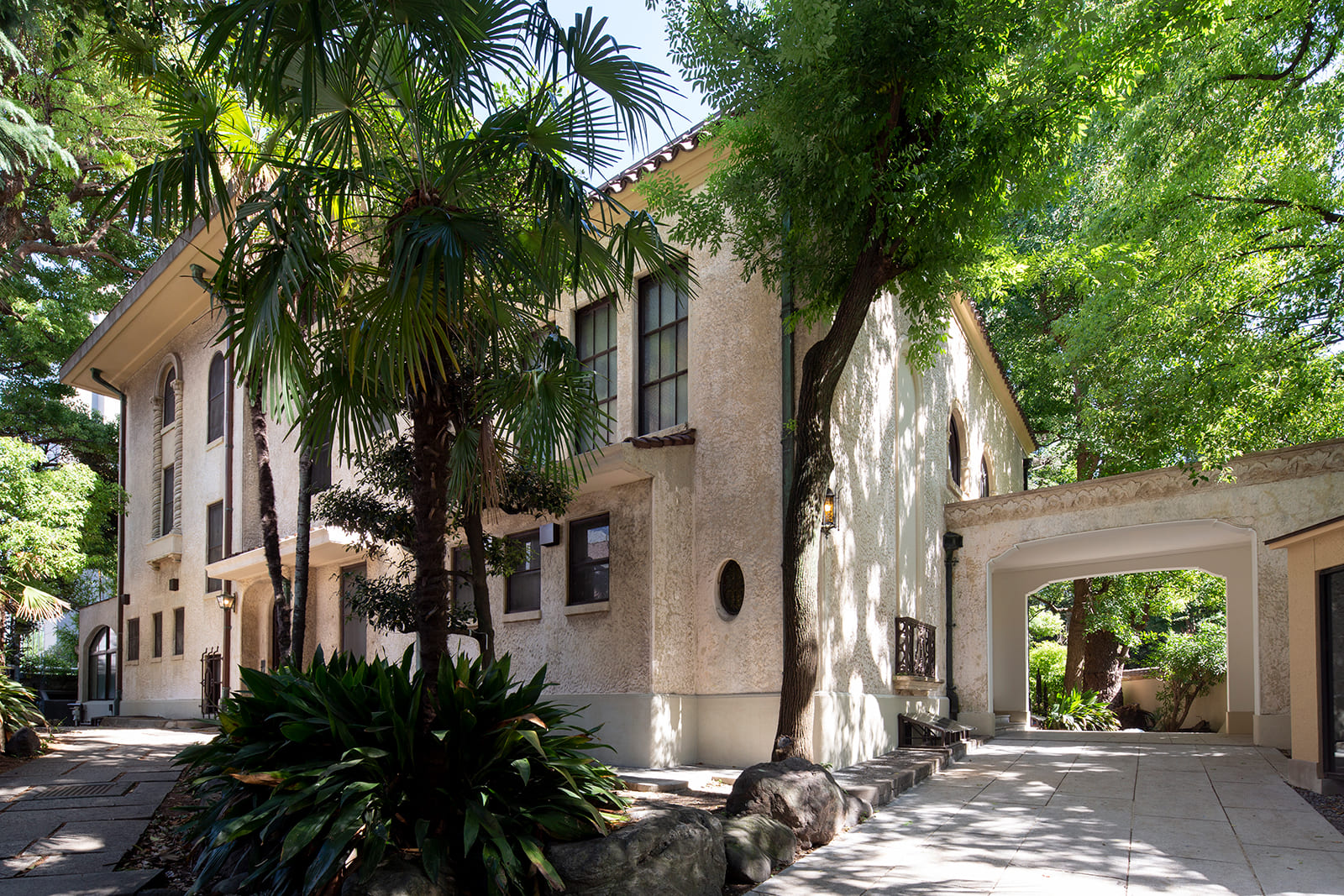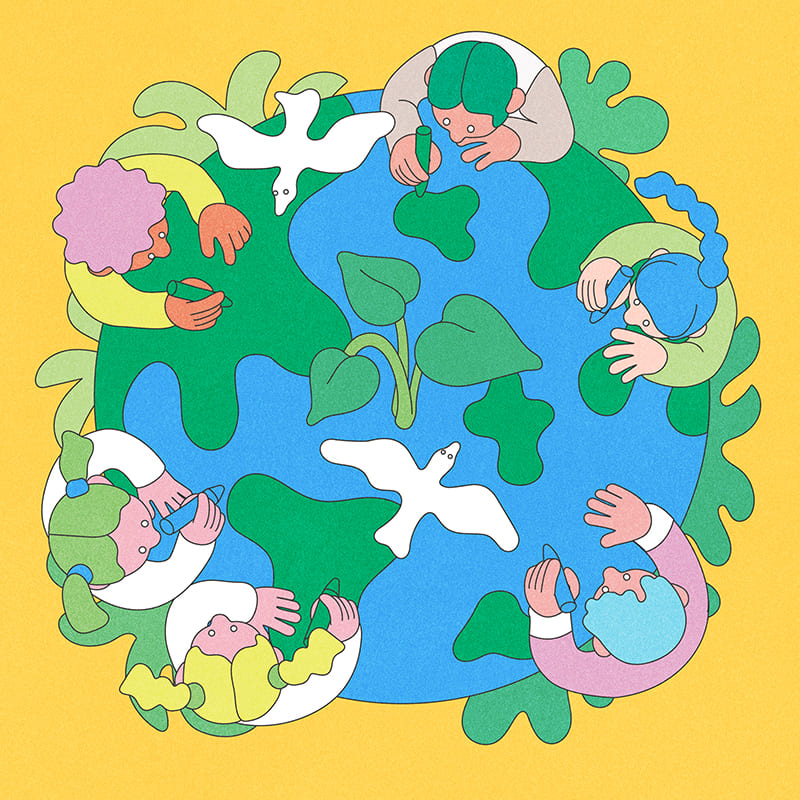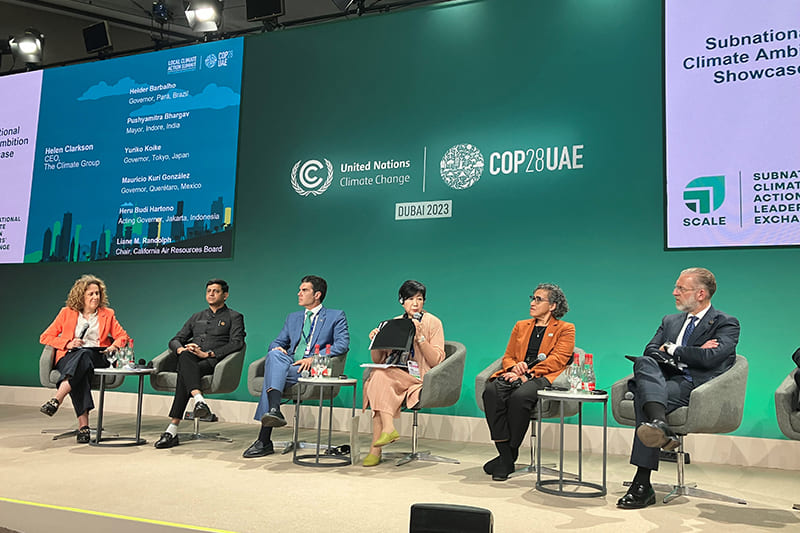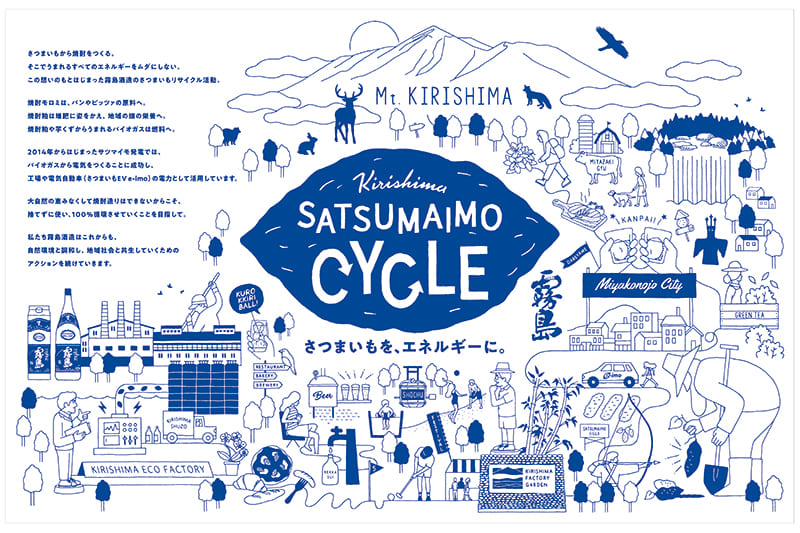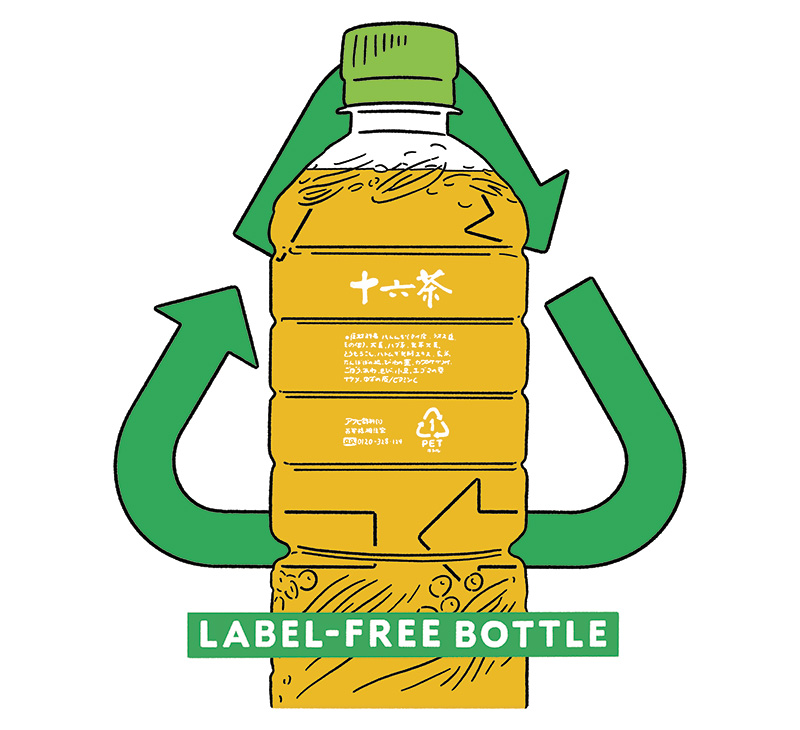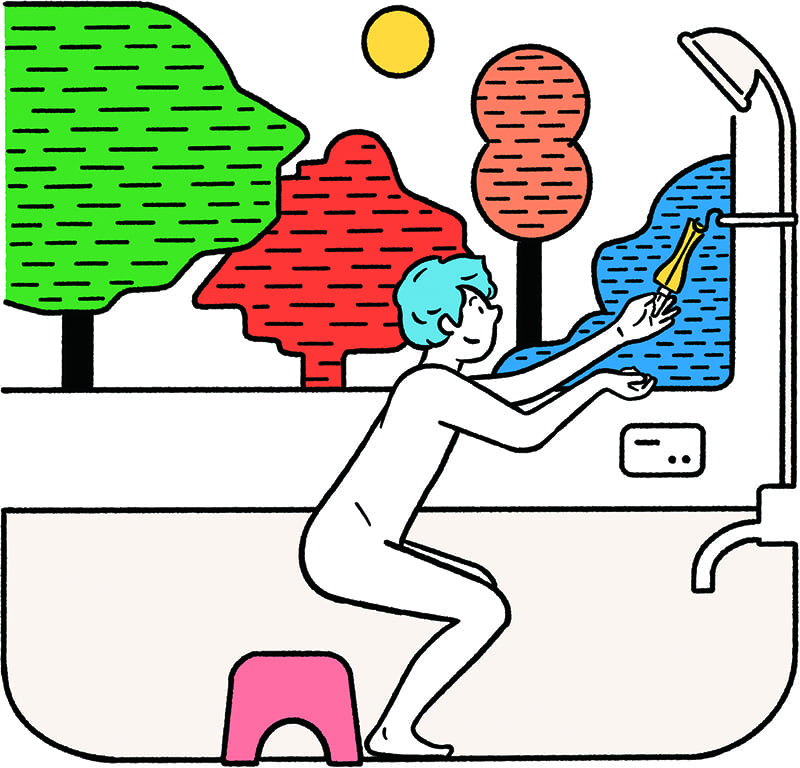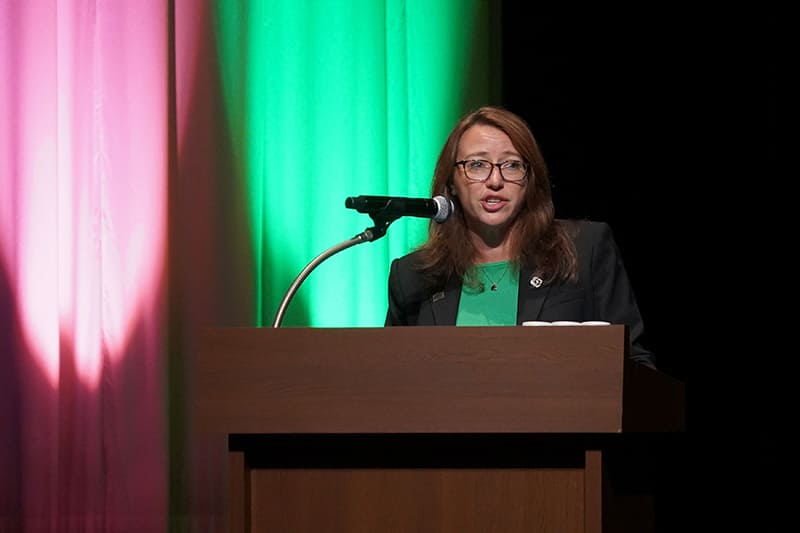June 28, 2024
World’s top homebuilder acts on its responsibility
VOL. 11: Sekisui House Ltd.
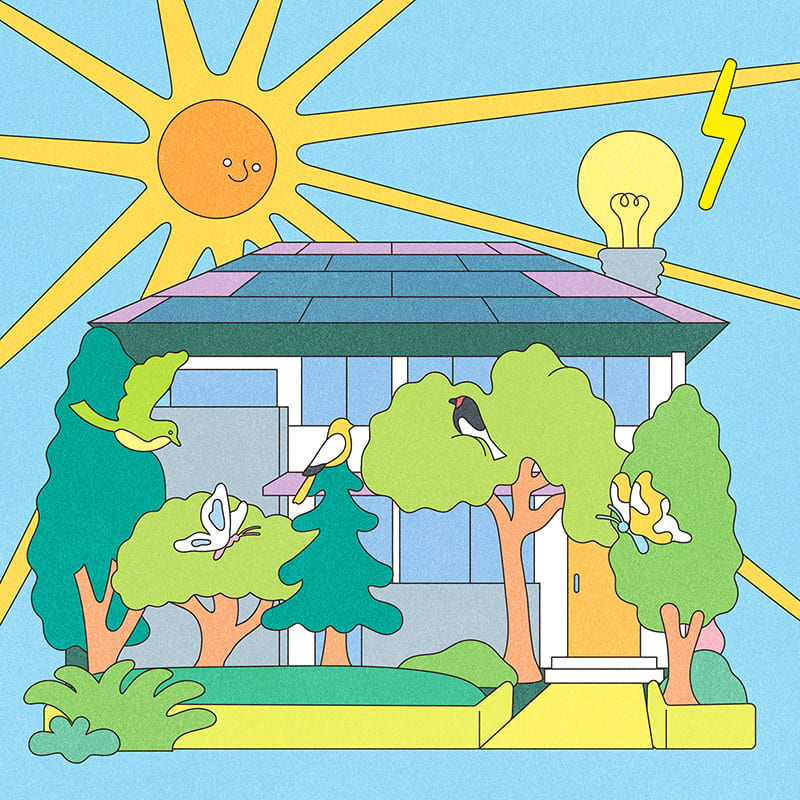
Sekisui House’s strong points
1.The first in Japan’s housing industry to be recognized as an “eco-first company” by the Ministry of the Environment, in 2008
2.Selected as one of the 10 triple-A companies in CDP’s 2023 global list
3.One of the largest sellers of net-zero-energy houses, topping 83,000 so far
4.Leads the industry in apartments, an area where the adoption of zero-energy housing remains slow, and is working to help achieve a circular economy
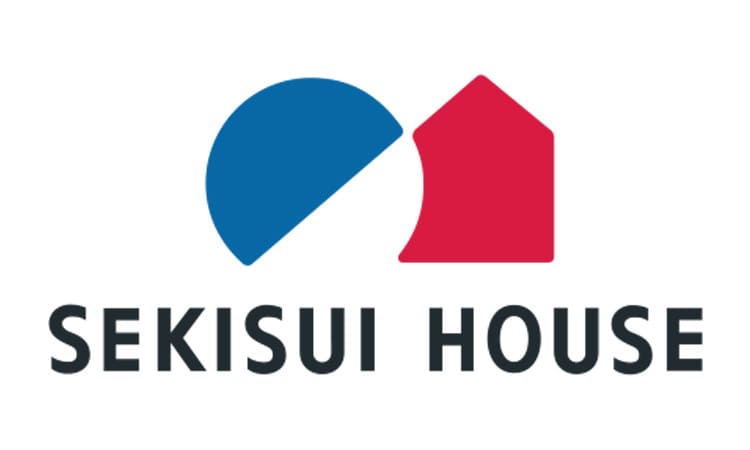
Having built 2.66 million houses by this January, Sekisui House Ltd. is the world’s largest homebuilder. The company also leads the industry in efforts for sustainability.
In 2008, Sekisui House became the first homebuilder to be certified as an “eco-first company” by the Japanese Ministry of the Environment. The ministry’s eco-first program certifies companies that have committed to voluntary environmental goals recognized as innovative, original and/or having a spillover effect. Other major players in the housing industry followed Sekisui’s lead.
The environmentally advanced Japanese company also gained international recognition.
In February 2024, CDP (formerly the Carbon Disclosure Project), an international nonprofit that evaluates businesses’ climate change measures, released its ratings for 2023. Sekisui received the highest rating in all three areas of climate change, forests and water security, making it a triple-A company. Of the 23,000 companies surveyed around the world, only 10 achieved triple A’s — and of those, Sekisui was the only homebuilder.
“It’s not like we made a big change recently. Our perception is that the things we have worked on over the past 25 years have finally been recognized,” Sekisui’s Toshiya Chikada said. The executive officer in charge of environmental promotion has worked in environment-related positions since joining the company.
Sekisui was early to adopt environmentally minded management policy compared to not only domestic but also overseas companies.
The Carbon Neutral House
Sekisui’s efforts to generate environmental value began in 1999 with the announcement of its Environmental Future Plan (see the article in the box).
After that, Sekisui took a series of actions. In 2001, it launched the Gohon no Ki (“five trees”) project to protect native trees and biodiversity. In 2002, it achieved zero emissions at its factories. In 2003, it standardized a next-generation energy-saving specification for detached homes. In 2005, it announced a “Declaration of Sustainability,” in which it pledged to make all new homes compliant with CO2 emissions reduction targets under the Kyoto Protocol. In 2007, it introduced guidelines to promote the sourcing of sustainable Fairwood products.
Chikada said these efforts had a lot to do with the company’s ability to quickly take action to become certified as an eco-first company soon after the Environment Ministry launched the eco-first program in April 2008.
“To be certified under the eco-first program, companies are required to make an ‘eco-first promise,’ but by then we had begun specific initiatives,” he said.
Sekisui, the only homebuilder among the first 23 companies certified in the first year of the program, listed 16 promises as specific plans. In one of them, it said, “We will actively promote our innovative Carbon Neutral House, which combines energy conservation with energy generation in a comfortable living environment to achieve net CO2 emissions of close to zero.”
True to its word, Sekisui went on to become the leader in efforts to promote energy-saving homes.
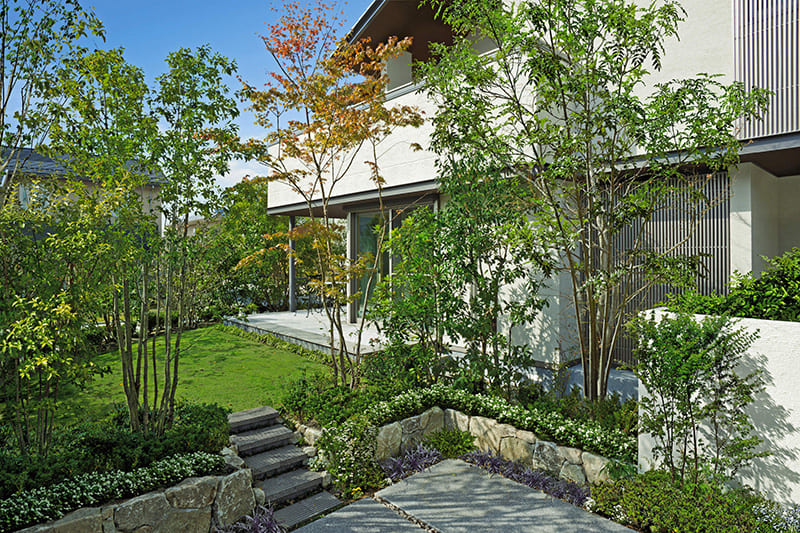
© SEKISUI HOUSE LTD.
80,000 zero-energy homes
This April, Sekisui announced it had sold 83,541 homes compliant with the standard for net-zero-energy houses (ZEH) up to March 31. That makes Sekisui the company that has sold the largest number of them in the world.
Such houses have an energy balance of zero or lower. The Japanese government established the concept of ZEH and methods for calculating energy balances in 2012. Construction of such homes gained momentum after the Strategic Energy Plan, approved by the Cabinet in April 2014, called on the government to “achieve net zero energy for standard newly constructed houses by 2020 and for all newly constructed houses on average by 2030.”
Sekisui had begun selling zero-energy homes in 2013, a year before the Cabinet decision. In that first year of their sale, they represented 49% of the homes Sekisui built, largely achieving the government’s target. Chikada said Sekisui was so quick to act because it had voluntarily worked on the development and sale of energy-saving homes after the eco-first promise in 2008.
“We built a zero-emission house at the venue of the G8 summit in Toyako, Hokkaido, in 2008 to showcase Japan’s housing technology to the rest of the world, and we had introduced a product called the Carbon Neutral House earlier in the same year,” Chikada said. “And these projects gave us learning opportunities on how we might make and sell such products. That’s why we were quick to take action when the government came up with the idea of ZEH.”
Since then, Sekisui has continued to far outperform the government’s target. In fiscal 2022, which ended in March 2023, zero-energy homes represented 93% of the new homes that the company built in all areas excluding Hokkaido, and the figure rose to 95% in fiscal 2023, which ended this March.
In recent years, rival homebuilders have grown aggressive in introducing ZEH, intensifying competition. But Sekisui remains the leader, and also leads in introducing ZEH techniques in apartments.
In October 2021, Sekisui announced it would sell only ZEH-compliant condo units and only condo buildings compliant with the condo-specific ZEH-M standard beginning in 2023. The company proved true to its word in fiscal 2023.
Sekisui is also striving in terms of rental properties, an area where the adoption of ZEH has not generally advanced. In fiscal 2023, the ratio of the ZEH-compliant properties among its Sha Maison brand of rental apartments increased to 76%, up 11 percentage points from a year earlier. The number of units ordered for ZEH-compliant apartments totaled 42,562 units so far.
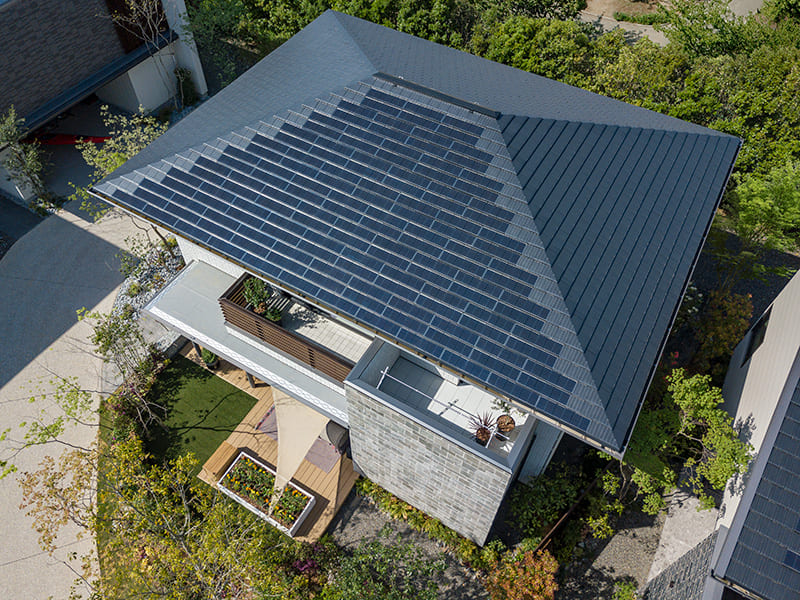
© SEKISUI HOUSE LTD.
No compromise in comfort
What has enabled Sekisui to lead in introducing ZEH?
One major factor is the fact that it was already working on the development and sale of eco-friendly homes before the term “ZEH” was introduced. In addition, consumers like Sekisui’s policy of not compromising on the design or comfort of homes, which has helped increase the acceptance of its products.
Sekisui’s rooftop solar power system symbolizes this policy. In place of the ceramic tiles typically used for Japanese roofs, the system uses solar panels shaped like such tiles. The system, unique to Sekisui, generates power without compromising on building design. Sekisui introduced it to housing products in 2003 in the belief that design matters if solar power systems are to be widely accepted.
“Until then, solar panels were placed on a roof in a large unit,” Chikada said. “By contrast, you can place our tile-shaped panels on roofs of any shape. They don’t jar with the existing townscape, and you can give homes a neat appearance with them. On top of that, they generate power and help cut power bills. That’s why our customers are satisfied with them.”
Chikada said the company also pays attention to the design of homes. “If you make openings in homes, like windows, and living rooms smaller, it helps reduce energy consumption, but we worked to find ways to make our homes compliant with ZEH while still maintaining comfort,” he said. “For example, we install large windows and we plant the ‘five trees’ in the yard so that residents can spend time comfortably in a large living room while viewing birds and butterflies. That way, we introduced improvements in a way that improves comfort while also maintaining energy-saving performance.”
To achieve this, the first thing Sekisui worked on was the adoption of double-paned windows that have high insulating performance. This effort goes back many years.
By 2000, high-performance double-paned windows and insulated aluminum sliding window frames came standard with all of Sekisui’s detached homes. By 2003, the company had uniformly introduced for all of its detached homes specifications that complied with the government’s next-generation energy-saving standard, which had the highest requirement for insulating performance at the time. The company achieved both of these without transferring its increased costs to home prices.
“At the time, there was a belief that double panes were too expensive for general use, but after we introduced them as a standard feature, their mass production became viable and their costs dropped, leading to their greater use,” Chikada said.
Introducing ZEH increases costs, whether for detached homes, condominiums or rental apartments, and those costs are usually passed on to the buyers and renters. Still, the initial costs are offset over time through reduced heating and lighting costs and the sale of generated power, not to mention improved comfort.
“If you force customers to give up comfort for the sake of society or the environment, ZEH will not be accepted widely,” Chikada said. “So we attach importance to finding ways to make [our products] accepted by many people.” This philosophy applies to rental properties as well.
As of the end of fiscal 2023, 76% of ZEH-compliant rental apartments had solar power systems and their residents were benefiting from the sale of electricity they generated. “The systems have proved popular with younger generations because they are economically beneficial even while contributing to conserving the environment and reducing CO2 emissions at the same time,” Chikada said. “There are about 30,000 residents in ZEH rental homes, and a survey found that many of them hoped to find a ZEH-compliant property again after leaving the current one. So we’re expecting this generation may become a starting point for a change in society.”
True resource recycling
Sekisui has increased the competitiveness of its homes by using energy-saving components, which has also changed the overall industry trends and expanded the market for ZEH-compliant homes. Increasing the use of electric vehicles as well is a natural part of its future plans.
Nearly all of its newly built detached homes already have chargers for electric vehicles. Last December, it announced that it had established a system for providing EV chargers for its Sha Maison rental housing across the nation.
“I read stories about EVs facing setbacks, but we should seriously think about them,” Chikada said. “The International Energy Agency had this report that estimated that more than half of the sales of new vehicles around the world will be EVs by 2035. So if that’s the case, a homebuilder like us needs to think more about ways to design homes that have features like using power generated by home solar panels to charge electric vehicles, or a way to let residents ride out blackouts during a disaster, for example.”
Helping achieve a true circular economy is also on Chikada’s mind.
Sekisui has been working on improved recycling of waste from construction projects for more than two decades. After building a recycling center at a plant in the Kanto area in 2003, the company set up similar facilities in a total of 23 locations nationwide. These facilities collect all of the waste from construction sites across Japan and recycle it.
Not all waste is turned into new construction materials through recycling. There is also thermal recycling, which burns waste to generate energy. Chikada is not yet satisfied with Sekisui’s endeavors in this area.
“When we think of all the kinds of risks that can materialize in the supply chains of construction materials in the future, including depleted resources and geopolitical issues, we realize we must devise ways to construct buildings that don’t rely on virgin materials,” Chikada said. “A true circular economy, for us, means leaving behind the system in which we take from nature, make things and discard them.”
Sekisui has already begun efforts in this area for some construction materials. Last September, it announced it had successfully developed a material for interior walls upcycled from waste vinyl chloride wallpaper in a collaborative project with Fukuvi Chemical Industry Co. and Shouwa Sustainable Plastics.
“To make our economy circular requires all industry players to work together,” Chikada said. “It will take time, for sure, but we must do it.”
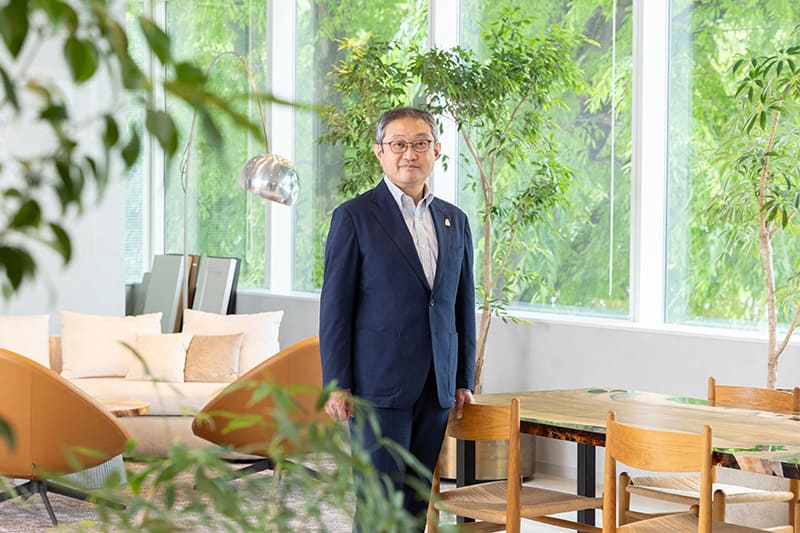
PHOTO: HIROMICHI MATONO
It all began with the Environmental Future Plan
Toshiya Chikada, Ph.D.
Sekisui House Ltd.
Executive officer in charge of environment improvement and deputy head of ESG management promotion
In 1999, Sekisui House announced its Environmental Future Plan. Since then, we have led the industry in taking on wide-ranging environmental initiatives.
We have been seen as quick to undertake environmental efforts, but when taking action, we do not pay attention to what our rivals are doing. Our track record is the result of our efforts to think for ourselves and act by ourselves.
The Environmental Future Plan took shape in the belief that it is Sekisui’s responsibility to pass on the natural environment to future generations. The background to this is the fact that Sekisui is the company that has built the largest number of homes in the world.
Sekisui House has built more than 2.66 million homes so far. When we announced the Environmental Future Plan, we had already become the company that had built the world’s largest number of homes, and we were aware that we had a proportionally large impact on the global environment. So we felt we had a significant responsibility for averting environmental destruction, not just for the sake of present-day society but also for the coming generations.
We must also protect biodiversity. With this determination, we launched the Gohon no Ki (“five trees”) project in 2001.
The project was launched during an era of large-scale projects in which mountain areas were developed into residential land. Trees were commonly felled in such areas, and non-native plants and garden plants that looked nicer were planted. But that was only for the sake of humans, not the plants and animals in those areas.
So we worked to plant mainly native tree species suited to the local climate under the slogan, “three trees for birds and two for butterflies.” We have so far planted about 20 million trees under this project.
It was a tough undertaking, but we would have lost places for native animals to live in unless we did so. We have thought about what we should do as a homebuilder and taken action.
The starting point was the Environmental Future Plan. Our determination that we must do what we must do, even if it is difficult, is stated in it. Our efforts to promote ZEH-compliant homes, which are aimed at net-zero consumption of energy, and our efforts to realize a circular economy are extensions of our ways of thinking that have remained the same since we came out with the Environmental Future Plan.
Even now, we do not act just because the government has told us to do so or we have seen a rival begin to do something. We think for ourselves and we spontaneously take action. We will continue to always think about what we can do to make our society sustainable and conserve the environment.
世界で最も住宅を建てたハウスメーカーの責務。
累計建築戸数266万戸。世界で最も住宅を建ててきた大手ハウスメーカーの〈積水ハウス〉は、サステナビリティへの取り組みでも業界をけん引する。
環境価値の創造にいち早く取り組んだ〈積水ハウス〉。起点となったのが、1999年に発表した「環境未来計画」だ。2001年に在来樹と生物多様性を守る「5本の樹」計画を始動。2008年には、日本の環境省から住宅業界で初めて「エコ・ファースト企業」に認定された。
そして2024年4月、〈積水ハウス〉はエネルギー収支をゼロ以下にする家「ZEH」の累積販売棟数が8万3541棟になったと公表した。正確な統計はないが、おそらく世界で最もZEHを販売した企業だろう。
同社はマンションなど集合住宅のZEH化でも先行している。2023年度には分譲マンションのZEH化100%を達成。賃貸マンション「シャーメゾン」のZEH比率も2023年度、前年度比11%増の76%まで向上。累積受注戸数は4万2562戸となった。なぜ、ここまで〈積水ハウス〉はZEH化で先行できたのだろうか。
Return to Sustainable Japan Magazine Vol. 37 article list page

